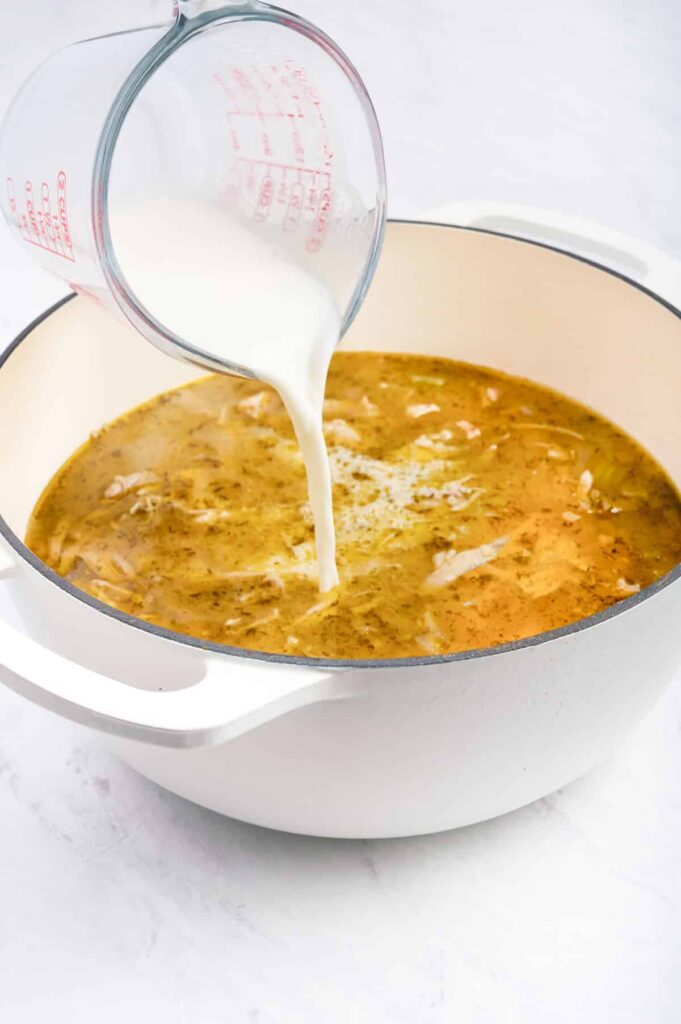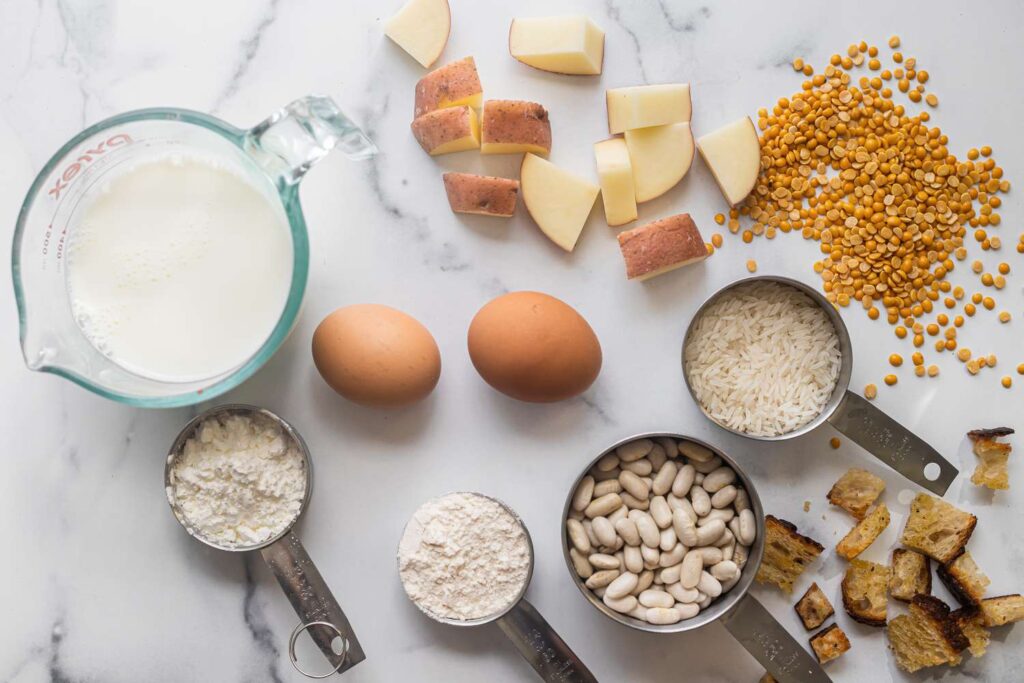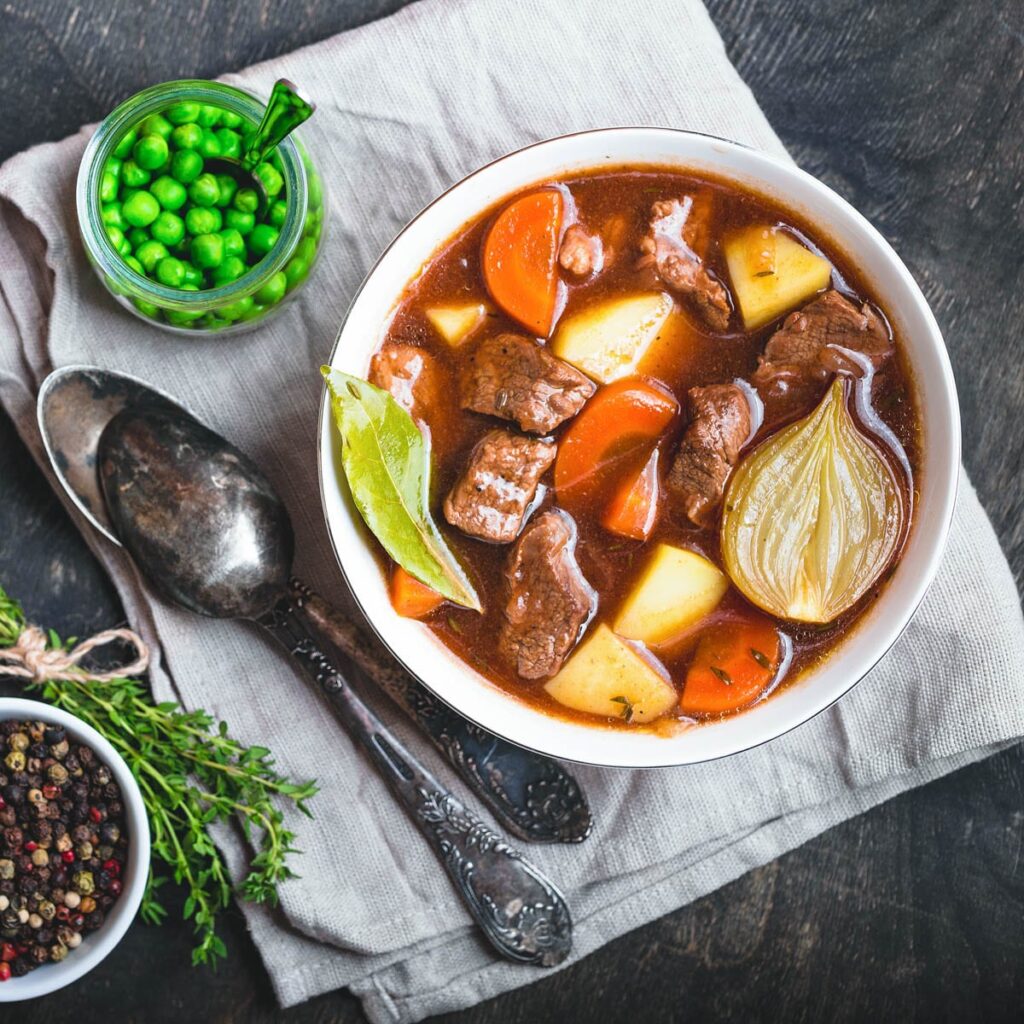How to thicken soup is a common question asked by many home cooks who want to achieve a hearty and satisfying texture in their soups. Soup is a classic comfort food that can warm you up on a cold day, provide nourishment when you’re feeling under the weather, or simply serve as a delicious meal.
However, sometimes the soup may be too thin, and you may want to make it thicker and heartier.
Thickening soup is a simple process that can be accomplished with a variety of techniques and ingredients. From classic thickening agents like roux to gluten-free options like arrowroot and potato starch, there are several ways to achieve your desired soup consistency.
This article will explore various methods and ingredients to help you thicken your soup perfectly.
Before diving into the methods of thickening soup, it is important to understand the reasons why soup may be too thin in the first place. Some soups are naturally thin, like clear broth or consomme. However, other soups can become thin due to excess liquid or not enough thickening agents.
Overcooking vegetables can also result in a thinner soup, as the vegetables release more liquid into the broth. Thin soup can be disappointing as it lacks the heartiness and flavour of a thick soup.
It can also make it difficult to enjoy the soup as a standalone meal or to use it as a base for other dishes like stews or casseroles. Therefore, having the knowledge and skills to thicken soup effectively is essential.

READ ALSO:
- How to make Banga Soup (Delta Version)
- Vegetable Soup Recipes: How To Cook the Nigerian Efo Riro
- How to make pepper soup
How to choose the right thickening ingredients
Choosing the right thickening agent for your soup depends on several factors, including the desired consistency, dietary restrictions, and cooking time. Here are some tips to help you select the best thickener for your soup:
- Consistency
Consider the consistency you want to achieve in your soup. For example, if you want a thick and creamy soup, you may choose a thickener like roux or cornstarch. If you prefer a lighter and more delicate texture, you may opt for arrowroot or potato starch.
- Dietary Restrictions
If you have dietary restrictions like gluten intolerance or allergies, you may want to choose a gluten-free thickener like arrowroot, potato starch, or tapioca flour. Additionally, some thickeners may contain animal products, so if you are following a vegetarian or vegan diet, be sure to choose a plant-based thickener.
- Cooking Time
Some thickeners require longer cooking times to fully thicken the soup, while others work quickly. For example, roux requires a longer cooking time than cornstarch, which thickens almost instantly. If you’re short on time, you may prefer a quick thickener like cornstarch.
- Taste
Different thickeners can affect the taste of the soup. For example, roux can add a nutty flavour to the soup, while cornstarch has a neutral taste. Consider the flavour of the thickener and how it will affect the overall taste of the soup.
By considering these factors, you can choose the right thickening agent that will achieve your desired consistency and complement the flavours of your soup.

Ingredients for thickening soup
You can use several ingredients to thicken the soup, each with its unique properties and benefits. Here are some of the most common thickening agents used in soup:
- Roux
Roux is a mixture of flour and fat that is cooked and used as a thickening agent in soups and sauces.
- Cornstarch
Cornstarch is a fine powder made from corn that thickens soup quickly and easily.
- Arrowroot
Arrowroot is a starch made from the roots of the arrowroot plant and is a popular gluten-free thickening agent.
- Potato Starch
Potato starch is made by extracting the starch from potatoes and is often used as a gluten-free thickener.
- Rice Flour
Rice flour is made by grinding rice into a fine powder and can be used as a thickening agent in soups.
- Tapioca Flour
Tapioca flour is made from the cassava plant and is often used as a thickening agent in soups and stews.
Each of these ingredients has its own strengths and weaknesses, and the choice of thickener will depend on the soup recipe, dietary requirements, and personal preference. It is important to note that some thickeners may alter the taste or texture of the soup, so it is best to experiment and find the right balance for your recipe.

How to Thicken Soup with Cornstarch
Cornstarch is a great option as it is a natural thickening agent, but you have to be careful about how much you use. Start with 1 tablespoon of cornstarch whisked together with cold water to create a slurry.
Then, gradually add the slurry to the soup, letting it boil for one to two minutes before adding more.
This method allows you to adjust accordingly as the soup is thickened (you might not need the entire slurry or more, depending on the viscosity of the soup and the texture you are aiming for). You can also substitute potato starch or rice starch for cornstarch.
Related: How to blanch Broccoli
How to thicken your soup with Roux
Roux is a classic thickening agent that is commonly used in French cuisine. It is made by cooking equal parts of flour and fat, such as butter or oil. Here are the steps to thicken the soup with a roux:
- Melt butter in a pan over medium heat. Once the butter has melted, add an equal amount of flour and whisk together to form a paste.
- Cook the roux for 1-2 minutes until it turns golden brown. This will help cook off the raw flour taste.
- Gradually add the roux to your soup, constantly stirring to prevent lumps from forming. Be sure to add the roux slowly, as too much too quickly can cause the soup to become too thick.
- Continue cooking the soup, occasionally stirring until it reaches the desired thickness.
- Taste the soup and adjust the seasoning as necessary.
Keep in mind that roux can alter the taste of the soup, so it’s important to taste and adjust accordingly. If the soup becomes too thick, you can add more liquid to thin it out. Additionally, the roux thickens as it cools, so if you plan on reheating the soup later, you may need to add more liquid before reheating to achieve the desired consistency.
Not to fret if your roux turns out dark brown. There are four varieties of Roux: white, blond, brown, and dark brown. The different colours are a result of how long the roux is cooked; white is cooked for the shortest time, while dark brown cooks the longest.
White and blond roux is the most common, used to thicken sauces, soups, and chowders. Brown and dark brown roux have more flavour but less thickening power than white or blond roux. Dark roux is primarily used in Cajun and Creole dishes, most notably gumbo and jambalaya.
SEE ALSO:
How to Thicken Soup with Arrowroot
Called arrowroot powder, arrowroot flower, and arrowroot starch, this thickener is made by processing the tropical arrowroot tuber. Like other thickeners, arrowroot is mostly odourless and flavourless.
It’s also a gluten-free alternative to flour. Unlike cornstarch, arrowroot is an excellent substitute for cornstarch in acidic soups and sauces because acid won’t break it down. When buying arrowroot, look for packages that only list arrowroot as the main ingredient, and you will avoid unnecessary fillers and additives, such as potato starch.
Related: How Many Ounces in a Cup (Food Measurements)
How to thicken Soup with Tapioca Starch
It might seem strange to have Tapioca as a thickening ingredient, but you are probably familiar with it as a food.
It is made from the cassava root, tapioca does not have a particular taste, but as a thickener, it acts as a model for other flavours. Just as with other powdery thickeners, it is mixed with water and made into a slurry before it is added to your soup.
Once tapioca is heated and hydrated, it lends a silky texture and shiny, translucent appearance, which are somewhat reminiscent of cornstarch. Unlike cornstarch, tapioca can become stringy when it nears the boiling point of water. Tapioca is a great gluten-free alternative to flour and can be used as a one-for-one swap.

How to Thicken Soup By Blending It
Blending is another method of thickening soup, especially if you want to achieve a creamy texture. The easiest way to thicken your soup is by blending the soup or a part of it. If your soup is packed with vegetables, you can blend part of it to change the texture. The blended vegetables will help thicken the consistency of the soup. To do this:
- Ladle some of the soup into a blender. Be sure not to fill the blender more than halfway, as the hot liquid can expand and cause the lid to pop off.
- Blend the soup on high speed until it is smooth and creamy. You may need to blend the soup in batches if you have a large amount of soup.
- Once the soup is blended, pour it back into the pot and heat it over medium heat until it reaches the desired temperature.
- Taste the soup and adjust the seasoning as necessary.
Related: How to Boil Corn on the Cob
Conclusion
In conclusion, several ways to thicken soup depend on your desired outcome, dietary restrictions, and personal preference. Roux, cornstarch, arrowroot, potato starch, rice flour, and tapioca flour are popular thickening agents that can achieve a thick and creamy texture in soups.
Consider the desired consistency, dietary restrictions, cooking time, and taste when choosing thickening ingredients. Roux is a classic and versatile thickener that can add a nutty flavour to your soup while blending can create a creamy and smooth texture.
Experiment with different thickening agents and techniques to find the right balance for your soup recipe. You can achieve a delicious and satisfying soup that meets your desired taste and texture with a little practice and creativity.
FAQs
What is the best thickener for soups?
Cornstarch is a very effective thickener, and a little bit can go a long way. Add cornstarch to a small amount of cold water or other liquid (wine or stock) and whisk into a thick slurry.
What is a natural thickener for soup?
Cornstarch is a great option as it is a natural thickening agent, but you’ll want to be careful about how much you use. Start with 1 tablespoon of cornstarch whisked together with cold water to create a slurry.
What are the 5 methods of thickening a soup?
1. Puree the vegetables.
The most straightforward way to thicken soup is to puree the vegetables. Starchy vegetables, in particular, offer the most creaminess. Try with corn, parsnips, potatoes, sweet potatoes, squash, or yams. Blend half (for a chunkier texture) or all of the vegetables and liquid together.
2. Mash beans, lentils, rice, or bread.
Rice, lentils, and beans release a lot of starch and naturally thicken soups simply from simmering, but you can also mash half the cooked rice/lentils/beans before adding to the soup for a simple way to thicken your dish.
3. Add some dairy.
Dairy products lend a lovely velvety texture to your dish. Soups thickened with dairy will not have the same heft as a pureed vegetable base but will still be rich and creamy. In addition, dairy mellows the soup’s flavour, effectively balancing a punchy dish.
How do you thicken Soup without cornflour?
A handful of uncooked rice. You can make use of a handful of white rice. Any kind will do jasmine, basmati, short or long grain. When added to a brothy (or watery, even) soup and left to simmer for 20-30 minutes, the rice breaks down, releasing its starch and thickening the liquid that it’s cooking in.





